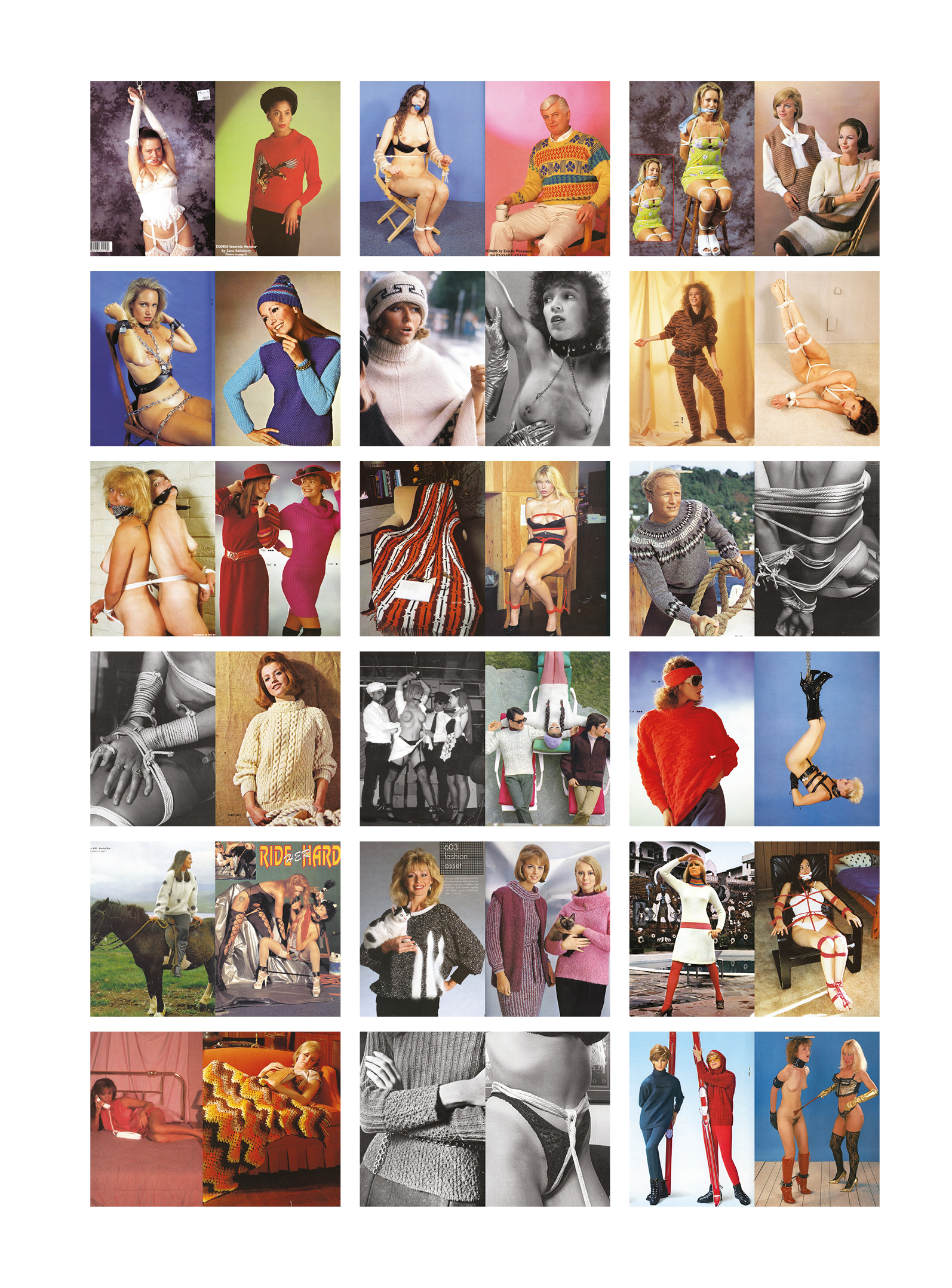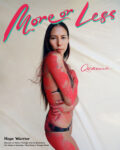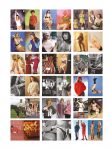
All images taken from Knotty by Lisa Anne Auerbach
“I had this collection of softcore bondage magazines from the 1980s and 1990s,” the Los Angeles-based artist Lisa Anne Auerbach says over Facetime, “but I’m not very organised and they got mixed up with my knitting-pattern magazines and ended up all together.” This was the genesis of Knotty, Auerbach’s image-led book of wool-clad women paired up with vintage kink shots. It may have been discovered purely incidentally, but there is more to it than just a visual connection between the two sets of images. “At first, I noticed the types of models and how the poses mirrored each other,” she says. “But then I started thinking about the similarities between knitting and bondage – the strings and ropes and the way that they both ultimately keep women sort of docile and controlled.”
Auerbach, known for her yarn works, including sweaters covered in wry commentary, was approached by Matthias Kind, CEO of Rudi Gernreich, to reissue Knotty (a play on the word naughty, of course). Originally put together in 2015, the book is an accompaniment to her capsule clothing collection created for the relaunched iconic 1960s brand, with designs including brightly coloured trousers and bodysuits. Its key piece is one of her signature pullovers emblazoned with a phrase from her archive: “I used to be part of the solution, now I’m part of the problem.” The sweater reminds the wearer that in trying to do the right thing, we all misstep. “I think activism should be honest – you can’t always be on your high horse,” Auerbach laughs. “You have to acknowledge that you may think that you are doing something positive for the world, but you can be a problem too.” It’s typical of the playful political bent of her art, putting across a viewpoint that quietly enters your mind and changes your thinking without you realising. “I use humour a lot. It’s a real sugar that makes the medicine go down,” she admits; it’s a tactic clearly used in Knotty.
The book’s juxtaposition of images has the effect of making the bondage pages seem less strait-laced and the pattern adverts seem kinkier. It’s not coincidental. “There is a charged sensuality to the knitwear visuals that’s brought to the fore. A lot of them are from a time when sweaters were a really sexualised garment; they draped over the breasts and clung to show the gure beneath,” Auerbach says, referring to the sweater-girl phenomenon of the 1950s. “They make a human into a stuffed animal. You’re all soft, fuzzy and people want to touch you.”
Putting both sets of imagery together deals with clashing notions of female power. The same images that fetishise the taking away of power from a woman, via knots, also show the power of enjoying oneself sexually. Images of a women kept dependent at home, knitting, show the power of creating something for yourself or of being empowered and still embracing traditionally gendered activities. It’s another contradiction in Knotty, which seems to say that you are free to be both of the archetypes depicted. The images aren’t absurd clashes of content, but perfectly normal together- neither one is right or wrong, nice or naughty.

